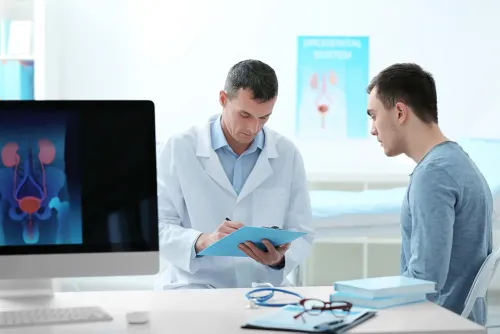Medical Conditions Connected To Abdominal Pain

The abdomen houses numerous organs, including the stomach, gallbladder, pancreas, and small and large intestines. When abdominal pain occurs, it can stem from various underlying conditions that range from minor digestive issues to more serious medical concerns. This complex symptom requires careful evaluation to determine its underlying cause and appropriate treatment approach.
What Types of Pain Exist?
Abdominal pain manifests in several distinct forms, each offering insights into potential underlying causes. Visceral pain originates from internal organs and typically feels deep, dull, and poorly localized. This type of pain may cause a cramping or gnawing sensation that patients struggle to pinpoint to a specific location.
Somatic pain arises from the abdominal wall, including muscles, skin, and the lining of the abdominal cavity. This pain can be sharp, well-localized, and constant. Patients can usually identify the exact location of somatic pain and describe it as stabbing or cutting. The timing and pattern of pain also vary significantly. Acute pain develops rapidly and may signal urgent medical conditions requiring immediate attention. Chronic pain persists for weeks or months and often indicates ongoing medical conditions that require long-term management strategies.
What Conditions Cause Abdominal Pain?
Digestive system disorders represent the most common cause of abdominal pain. Inflammatory bowel conditions, including Crohn’s disease and ulcerative colitis, cause chronic pain accompanied by changes in bowel habits. These conditions involve ongoing inflammation of the digestive tract and require specialized medical management.
Gallbladder disease frequently causes right upper abdominal pain that may radiate to the back or shoulder. Gallstones or inflammation of the gallbladder can produce intense, sudden pain episodes that often occur after eating fatty meals. Kidney stones create severe pain that typically begins in the back and moves toward the lower abdomen or groin area. This pain often comes in waves and ranks among the most intense pain conditions patients experience. Appendicitis causes pain that usually starts near the navel and moves to the lower right abdomen. This condition represents a medical emergency requiring prompt surgical intervention to prevent serious complications.
How Is It Treated?
Treatment approaches for abdominal pain depend entirely on the underlying cause identified through medical evaluation. Diagnostic procedures may include blood tests, imaging studies, and physical examinations to determine the source of pain. Medication management varies based on the specific condition. Acid-reducing medications can help treat gastritis, while anti-inflammatory drugs address conditions involving inflammation. Pain medications may provide temporary relief while addressing underlying causes.
Dietary modifications often play a significant role in managing pain. Avoiding trigger foods, eating smaller meals, and maintaining regular eating schedules can reduce symptoms for many digestive conditions. Surgical intervention becomes necessary for certain conditions such as appendicitis, gallbladder disease, or intestinal obstructions.
Speak With a Medical Expert
Abdominal pain requires proper medical evaluation to determine its cause and appropriate treatment. While some episodes may resolve on their own, persistent or severe pain warrants professional medical attention. Healthcare providers possess the expertise and diagnostic tools necessary to identify underlying conditions and develop effective treatment plans. Prompt medical consultation helps prevent complications and provides patients with the treatment needed to manage their symptoms effectively.
- What to Expect When Visiting a Foot and Ankle Specialist
- Causes of PTSD
- The Link Between Plantar Fasciitis and Weight Gain: What You Need to Know
- How Pet Ownership Can Positively Impact Life with Fibromyalgia
- The Importance of Stretching and Flexibility in Sports Medicine
Dr. Emma Green is a health and wellness expert with over 10 years of experience in nutrition and fitness. Passionate about helping others live their healthiest lives, Dr. Green shares practical advice on wellness, nutrition, and sustainable living through LivingSpristine.






